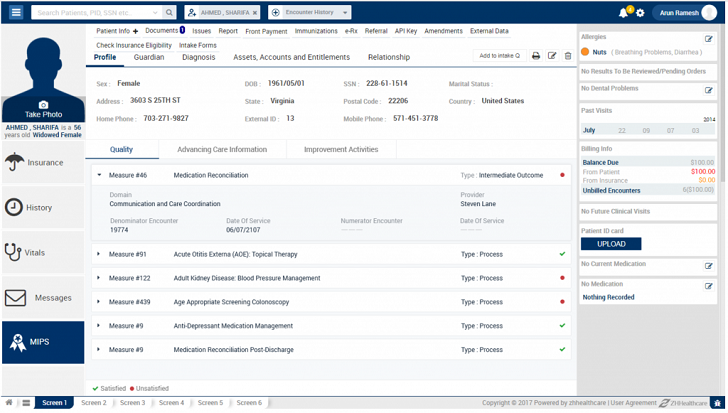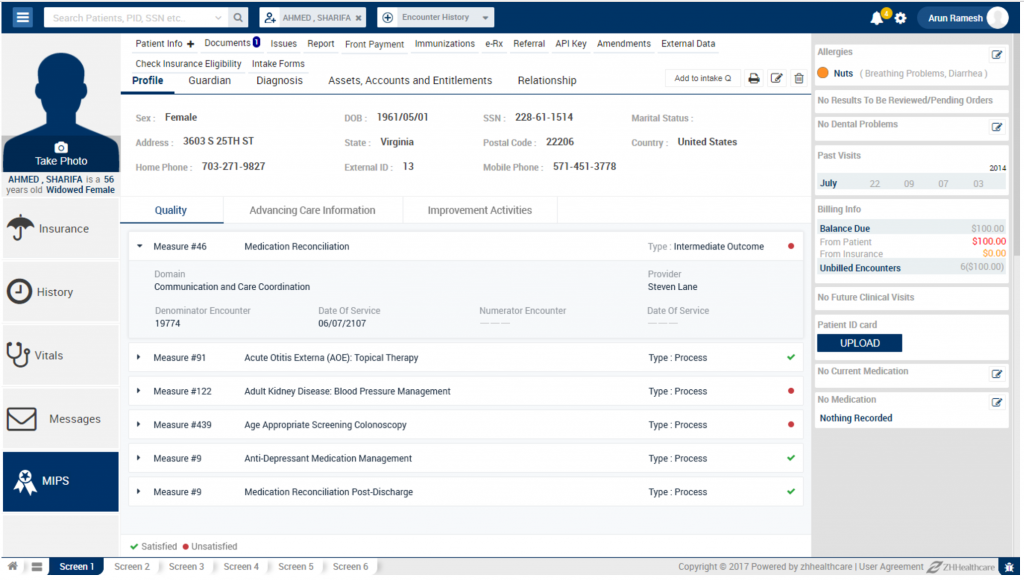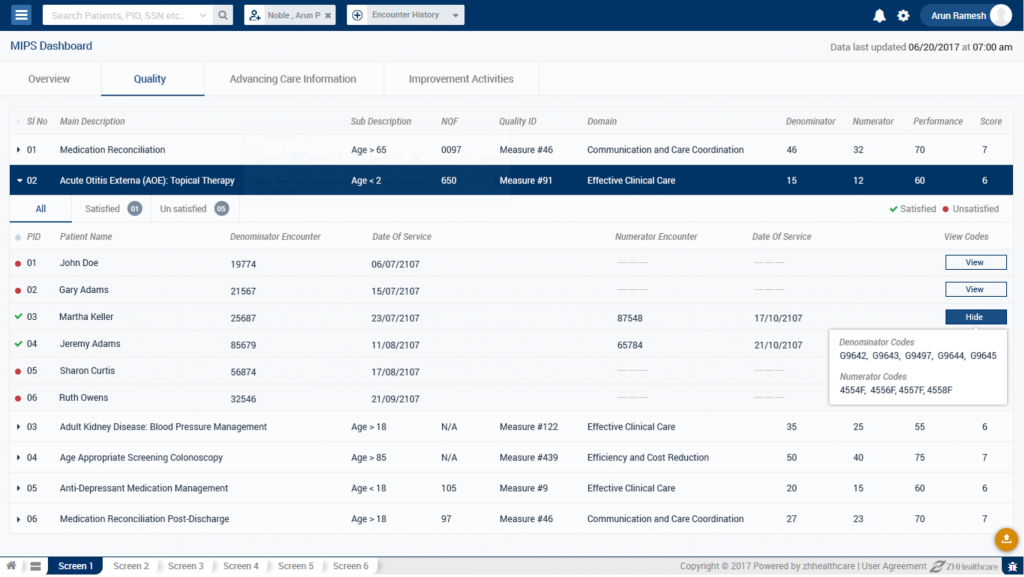
When the government passed MACRA in 2015, our law makers moves away from pay-for-performance programs that focus on volume of care, and adjusted to reemphasize quality of care instead. The regulation establishes standards that, if done properly, can truly improve quality of care across the industry. The primary purpose of the regulation is to improve care for all patients, regardless of income or access to care.
Secondarily, the regulation acknowledges this quality of care is only possible through technology. Summarily, it mandates the use of a tool that helps providers identify care parameters, perform certain exams and track/report on those measures. Tracking these measures on an individual level ensures that care is meaningful, while tracking them from the facility perspective ensures a provider remains compliant

blueEHR patient-level MACRA performance indicators
As Abner Gonsalves with Health eCareers recently explained, “Physician payments will be based on value and not on volume… and providers will have the potential to earn more or less, contingent on their performance as an individual or group, no longer as an industry on the whole.”
And these new incentivized measures go into effect in 2018*.
“In 2017, practitioners need to pick between AMP Or MIPS and begin reporting,” Gonsalves continues. “In 2019, practitioners and their employers will receive up to a 4% reimbursement bump if they report starting in 2017. If you fail to get your members to understand the importance of reporting, that failure will lead to up to a 4% decrease in Medicare/Medicaid reimbursements for your members.”

blueEHR facility-level MACRA performance dashboard
Meaningful Use and, now, MACRA are meant to increase transparency in the healthcare industry, improve data collection and bring us into modern times, where we use technology to manage not just our electronic records, but entire health systems and care coordination. Technology can ensure that all of this is seamless.
Most technologies focus on reporting because most of MACRA addresses know what and how to track certain measures. Reporting is only one piece that technology can help with… and some might say, it’s the simplest.
While most EHRs can collect the proper data and pull together MACRA-compliant reports, it takes a true eHealth solution to extend beyond that. More complex, and rarer, is the system capability to prompt providers with care parameters before reaching a patient and identify and automatically cue a doctor to perform certain exams while with them.
An EHR can help a provider identify the regulatory parameters of care and the complexity of submitting MACRA-compliant reports, but an eHealth solution seamlessly makes these requirements a part of existing workflows – truly enabling providers to maintain compliance with minimal (or no) effort.
* You do not need to report a full year to qualify for the maximum 2017 incentives. All you need is 90 days of data – meaning, if you start measuring in October, you will likely qualify! We’re offering complimentary training for our clients – email me today and set up a time with our team.